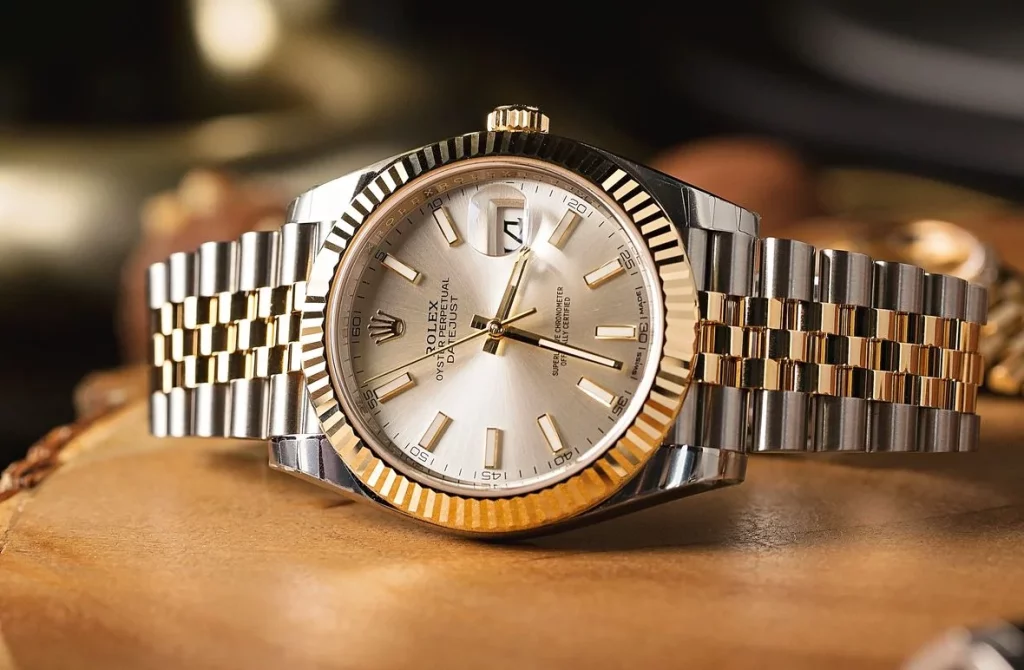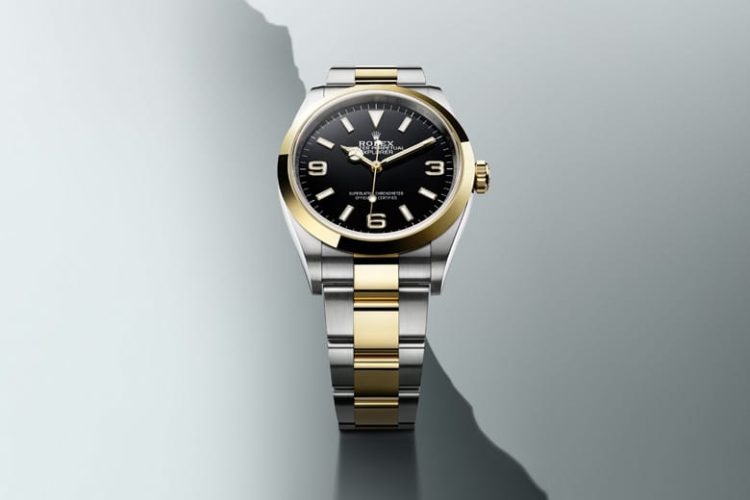Introduction: The Birth of an Icon
Rolex, the name that is synonymous with luxury, precision, and prestige in the world of horology, has a history that stretches over a century. Founded in 1905 by Hans Wilsdorf and Alfred Davis in London, Rolex began with the ambition to create timepieces that combined reliability with elegance. The brand’s rise to the pinnacle of watchmaking excellence is the story of innovation, craftsmanship, and unwavering commitment to perfection.
This tale, however, is not simply about watches. It is about the artistry and engineering that redefine the way the world perceives time. Over the years, Rolex has expanded far beyond its humble beginnings to become a symbol of success, achievement, and sophistication. From the first waterproof wristwatch to pioneering precision movements, Rolex has set the gold standard in watchmaking. But what makes Rolex truly special? Is it the craftsmanship, the innovation, or the brand’s continuous drive for excellence? Perhaps it’s all these elements combined.
Chapter 1: The Foundation of Rolex – The Dream of Hans Wilsdorf
Rolex’s story begins in the early 20th century when Hans Wilsdorf, a young visionary from Germany, sought to revolutionize the watch industry. Wilsdorf’s ambition was clear: he wanted to create a wristwatch that was not only precise but also stylish and reliable. At the time, pocket watches were more common than wristwatches, and many people doubted the accuracy of wristwatches. Wilsdorf was determined to prove them wrong.
Wilsdorf, who had experience in the watch industry, moved to Switzerland in 1905, where he partnered with Alfred Davis. Together, they founded Wilsdorf and Davis in London, which would later be renamed Rolex. Their goal was to create wristwatches that were both reliable and precise, while also possessing an elegance that could appeal to both men and women.
In 1908, Wilsdorf registered the brand name “Rolex,” a name that he believed was easy to pronounce in any language and evoked a sense of luxury. The name “Rolex” was short, memorable, and elegant, and it became synonymous with luxury watches from the very beginning.
Chapter 2: The Evolution of Rolex – Breaking Boundaries
The brand’s first major breakthrough came in 1910 when a Rolex watch was awarded the Swiss Certificate of Chronometric Precision, making it the first wristwatch to ever receive such an honor. This certification solidified Rolex’s commitment to precision and accuracy, which would become the cornerstone of its identity.
In 1926, Rolex introduced the Oyster, the world’s first waterproof wristwatch. This innovation was groundbreaking. The Oyster was sealed with a screw-down case, which made it resistant to water, dust, and other environmental elements. The watch’s resilience set it apart from other wristwatches of the era and positioned Rolex as a leader in innovation. To demonstrate the robustness of the Oyster, Rolex conducted a famous publicity stunt in 1927, where Mercedes Gleitze, a British swimmer, wore a Rolex Oyster during her attempt to swim across the English Channel. The watch emerged from the water perfectly intact, showcasing its ability to withstand extreme conditions.
In 1931, Rolex introduced the Perpetual movement, the world’s first self-winding mechanism. This innovation eliminated the need for a manual winding of the watch, a problem that had plagued watch enthusiasts for years. The Perpetual movement utilized a rotor that was powered by the wearer’s natural wrist movement, which made the watch more convenient and reliable.

Chapter 3: Rolex and the Age of Exploration
As the brand continued to innovate, Rolex became synonymous with adventure and exploration. The brand’s commitment to making timepieces that could withstand the harshest environments led to a close association with explorers, divers, pilots, and scientists. In the 1950s, Rolex introduced a series of watches that would come to define the brand’s association with adventure.
The Rolex Submariner, released in 1953, was designed specifically for divers and quickly became one of the most iconic watches in history. The Submariner was water-resistant to 100 meters (later upgraded to 300 meters), making it the perfect companion for deep-sea exploration. It featured a rotatable bezel that allowed divers to track their dive time accurately, a crucial tool for underwater expeditions.
Rolex also became involved in the world of aviation with the introduction of the Rolex GMT-Master in 1954. Developed in collaboration with Pan American Airways, the GMT-Master allowed pilots to track multiple time zones simultaneously, a feature that proved invaluable for international flights. The watch quickly became a favorite among pilots, and its distinctive 24-hour bezel became a signature feature of the model.
In 1956, Rolex introduced the Day-Date, the first wristwatch to display both the day of the week and the date. This model was a symbol of luxury, precision, and functionality, and it became known as the “President’s watch,” worn by world leaders, including President Lyndon B. Johnson.
Chapter 4: Innovation in Design and Technology
Rolex’s commitment to innovation went beyond just functionality. The brand also revolutionized watch design and material technology. In the 1960s and 1970s, Rolex developed the Rolex Milgauss, a watch designed to withstand magnetic fields, which was especially important for scientists and engineers working in environments with strong magnetic fields. The Milgauss’s innovative design featured a green-tinted sapphire crystal that became a hallmark of the model.
Another significant breakthrough came in the 1980s with the introduction of Rolex’s Rolesor technology, which combined stainless steel and 18k gold to create a more durable yet luxurious watch. This design innovation made Rolex timepieces more accessible while maintaining the brand’s signature elegance and robustness.
The Cerachrom bezel introduced in 2005, which is made from a highly durable ceramic material, marked another technological leap. This bezel was scratch-resistant and could withstand UV rays, ensuring that the watch remained looking new for years.
Chapter 5: The Iconic Models
Over the years, Rolex has produced some of the most iconic watches in the world, each with its own history and significance.
- Rolex Datejust (1945): The first wristwatch to feature an automatic date function. It remains one of Rolex’s most iconic models, with its classic design and versatile nature.
- Rolex Daytona (1963): A watch created for race car drivers, the Daytona is perhaps the most famous chronograph in the world. Its association with motorsports and the legendary actor Paul Newman has only added to its mystique.
- Rolex Explorer (1953): Born out of Rolex’s association with mountaineers and explorers, the Explorer was designed to withstand the extremes of high-altitude climbs. The watch’s simple and legible design made it a favorite among adventurers.
- Rolex Yacht-Master (1992): A watch designed for yachting enthusiasts, it features a highly durable case and a rotatable bezel, making it an ideal companion for sailors.
Chapter 6: The Rolex Philosophy – Quality, Precision, and Craftsmanship
At the heart of Rolex’s success is its unwavering commitment to quality, precision, and craftsmanship. Each Rolex watch is handcrafted in Switzerland by skilled artisans who devote themselves to ensuring that every component of the watch meets the highest standards.
Rolex’s in-house manufacturing process is one of the most vertically integrated in the watch industry. The brand controls almost every aspect of production, from the creation of the movement to the polishing of the case. This level of control allows Rolex to maintain strict quality control and guarantee the precision and durability of its timepieces.
Rolex also invests heavily in research and development to ensure that its watches remain at the forefront of technological advancements. This commitment to innovation is matched only by the brand’s dedication to traditional watchmaking techniques, blending the old with the new in perfect harmony.
Chapter 7: The Legacy and Status of Rolex
Today, Rolex is more than just a watch brand; it is a symbol of status, success, and achievement. The brand’s iconic designs, superior craftsmanship, and technological innovations have made it a favorite among collectors, athletes, celebrities, and business leaders. Owning a Rolex is not just about telling the time—it is about celebrating a legacy of excellence that spans over a century.
Rolex has also maintained its exclusivity, with limited production and a commitment to preserving the brand’s heritage. This exclusivity, combined with the brand’s enduring appeal, has made Rolex watches some of the most coveted timepieces in the world.
Conclusion: The Timelessness of Rolex
Rolex’s journey from a small watchmaking company to one of the most recognized and respected brands in the world is a testament to the power of vision, innovation, and craftsmanship. The brand has continuously pushed the boundaries of what is possible in watchmaking, while remaining true to its core values of precision, durability, and elegance.
A Rolex is more than just a watch; it is a symbol of a life well-lived—a reflection of achievements, moments, and memories. Whether worn by pioneers, explorers, or those seeking to mark significant milestones, a Rolex watch remains timeless, enduring, and as relevant today as it was over a century ago.





































